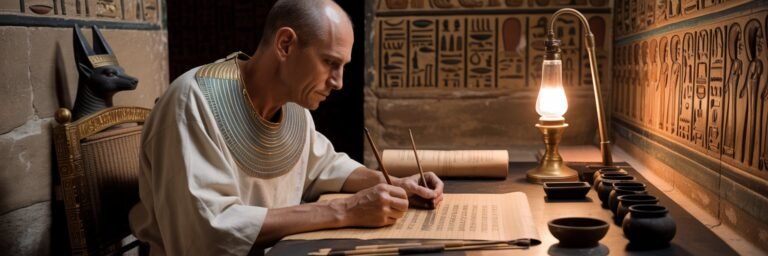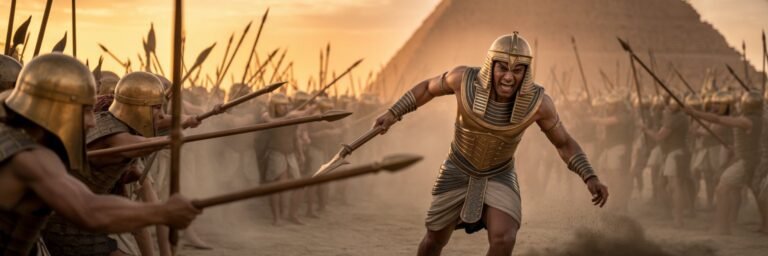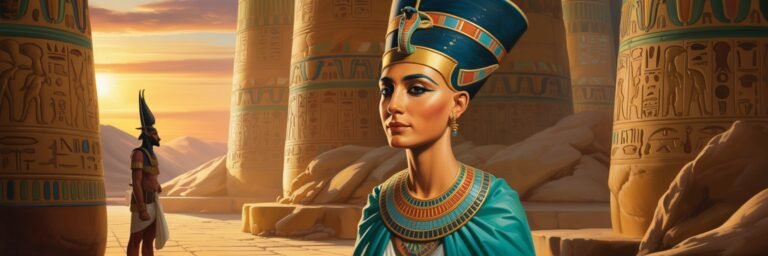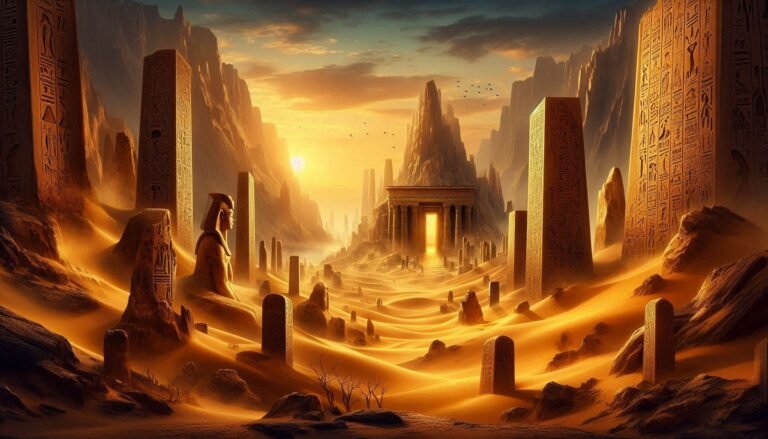INTRODUCTION
The multifaceted and spectral legacy of Ancient Egypt continues to awe and outlast cultural metamorphosis, embodying a junction between past, present, and future. Such specific resilience demands meticulous investigation and analyzation of the myriad aspects that have contributed to its enduring prowess. From exquisite, looming architectural marvels like the Great Pyramids to the enigmatic hieroglyphics retaining profound philosophical discourses, the elements attributing to Ancient Egypt’s prowess stretch far and wide. This inquiry into the societal, cultural, and political factors that accelerated Ancient Egypt’s historical impact will traverse the terrain of time and history itself.
HISTORICAL BACKGROUND
In the womb of the Nile Valley, around 3100 BCE, the entity of ancient Egypt was conceived through the unification of Upper and Lower Egypt under the rule of the first Pharaoh, Narmer. Over the subsequent millennia, the flame of this civilization would illuminate the path of human history with a series of storied epochs: the Archaic Period, the Old Kingdom, the Middle Kingdom, and ultimately the New Kingdom.
In each era, the Egyptian civilization introduced definitive advancements and evolutions. Their obsession with immortality and the afterlife bore profound reflections in monumental architecture, theology, medicine, and the nascent realm of mathematics. Iconic structures like the Great Pyramid of Giza and the Sphinx stand as echoing testaments to those ambitions.
THEORIES AND INTERPRETATIONS
Perspectives on Ancient Egypt’s influence in shaping the course of history circulate within a complex carousel of interpretations. Some scholars accentuate Egypt’s contribution to philosophy, asserting that intellectual giants like Socrates, Plato, and Aristotle imbibed wisdom from Egyptian contemplations, thus fueling Hellenistic thought, which would later kindle the Western philosophical tradition.
Others highlight the domino effect triggered by military expeditions. The ambitious pursuits of Pharaoh Thutmose III, for instance, led to the incorporation of distant regions under Egyptian influence, consequentially fostering cultural exchanges and diluting frontiers of isolated development.
However, it is also crucial to acknowledge alternative theories. Heribert Illig, the German historian, for instance, emphasizes a phantom period in the chronology of Ancient Egypt, igniting debates questioning the authenticity and veracity of Egyptian dates.
MYSTERIES AND CONTROVERSIES
The mesmerizing appeal of Ancient Egypt has often been heightened by the shroud of mysteries and controversies enveloping it. Among these enigmas, the construction of the Great Pyramids remains a robust subject of debate, with theories ranging from alien involvement to a workforce of 20,000 labourers laboring over two decades.
Additionally, controversies regarding the Great Sphinx and its weathering patterns sparked discussions about potential alternate timelines for Egyptian civilization. Mainstream academics endorse the theory of the Sphinx being sculpted during the reign of Pharaoh Khafre around 2500 BCE. However, geological observations related to water erosion have led some theorists like Robert Schoch to propose that the Sphinx might be thousands of years older than conventionally accepted, driving a disruptive narrative.
SYMBOLISM AND CULTURAL SIGNIFICANCE
In the realm of cultural profundity, Ancient Egypt’s symbolic language and ritualistic observances are hard to rival. The civilization’s iconic pictorial script, hieroglyphics, projected an elaborate cosmology full of symbolism. With symbols ranging from ankh, symbolizing life, to djed, representing stability, the civilization’s symbolic degree significantly impacted artistic interpretations and cultural expressions.
The divinities, too, held crucial cultural significance, often embodying aspects of nature and cosmic forces. Their complex religious pantheon fed into the creation myths, death rituals, and architectural grandeur, bolstering cultural diffusion and influencing later Hellenistic, Roman, and Judaic religious frameworks.
MODERN INVESTIGATIONS
Modern investigations into Ancient Egypt, aided by advancements in archaeology and technology, continue to unearth insights. For example, the recent discovery of a 3,000-year-old ‘Lost Golden City’ near Luxor offers fresh perspectives on the reign of Amenhotep III. Similarly, innovative non-invasive techniques employed to study the Great Pyramids, like muon tomography, have opened up avenues for reinterpreting established theories and potentially solving long-standing mysteries.
LEGACY AND CONCLUSION
As a civilization from an era where human consciousness was just beginning to contemplate its existence, Ancient Egypt’s legacy transcends the tangible. It weaves its narrative into the very fabric of human history. The civilization’s advancements in science, medicine, architecture, and governance have left profound ripples touching many corners of human evolution. The law codes, inspired by Maat – the concept of truth and justice, resonate in today’s legal frameworks.
But more than its tangible achievements, Ancient Egypt endures in the collective human imagination, its mysteries continuing to tantalize, its grandeur continuing to awe, and the echoes of its ancient wisdom reverberate through the corridors of time.
In conclusion, Ancient Egypt’s impact on the course of history remains monumentally significant. It symbolizes humanity’s perpetual quest for understanding the universe, the desire for eternal life, and the ever-present urge to imprint one’s existence amid the sands of time. It’s a narrative writ large upon the canvas of human civilization, as evocative and enduring as the monuments it bestowed upon us.






